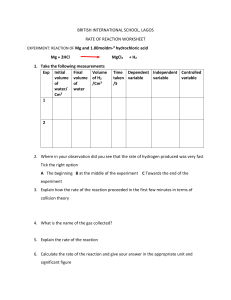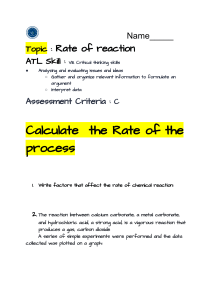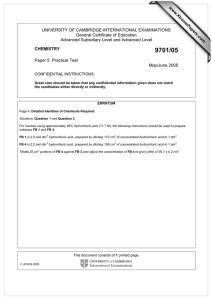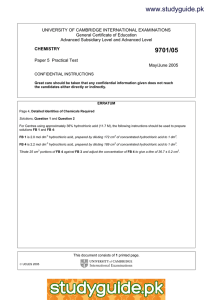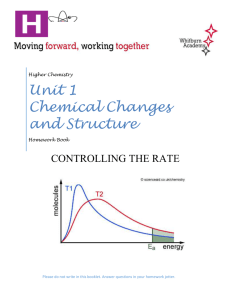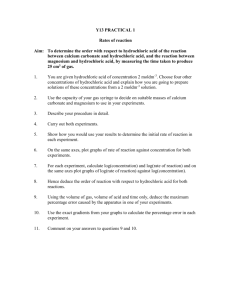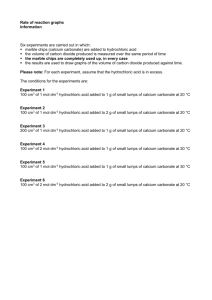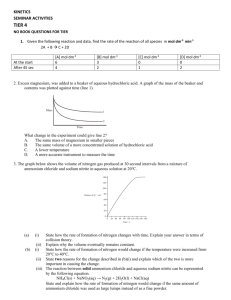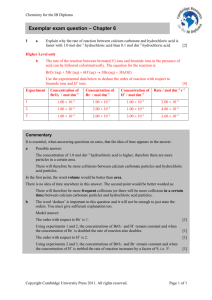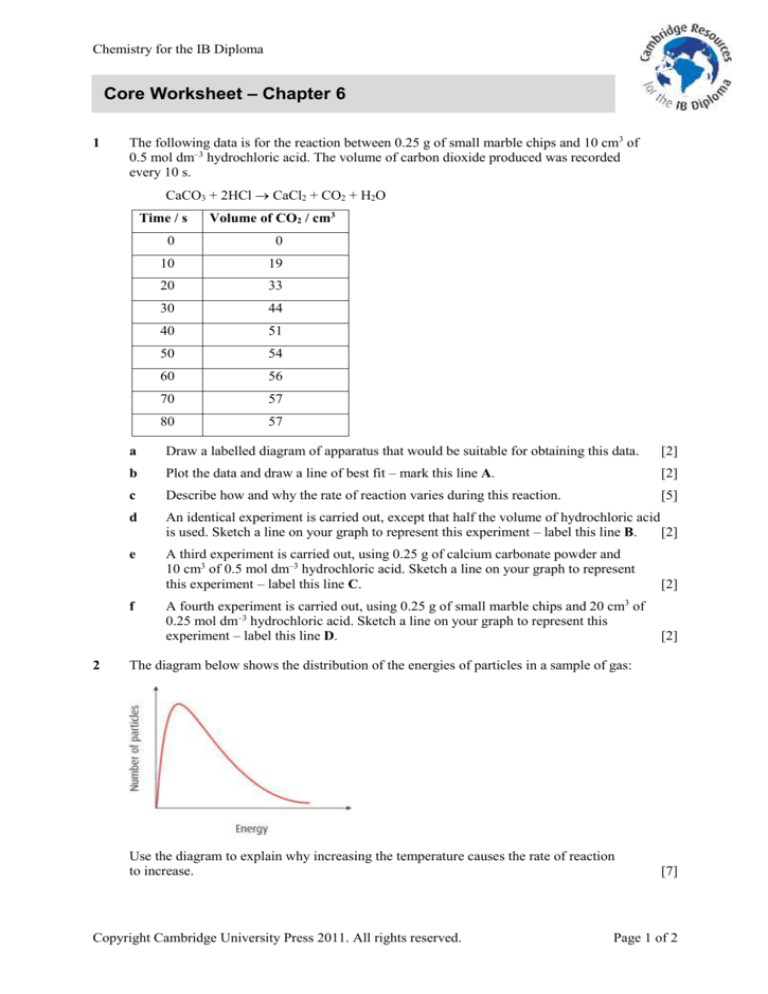
Chemistry for the IB Diploma
Core Worksheet – Chapter 6
1
The following data is for the reaction between 0.25 g of small marble chips and 10 cm3 of
0.5 mol dm–3 hydrochloric acid. The volume of carbon dioxide produced was recorded
every 10 s.
CaCO3 + 2HCl CaCl2 + CO2 + H2O
Time / s
0
0
10
19
20
33
30
44
40
51
50
54
60
56
70
57
80
57
a
Draw a labelled diagram of apparatus that would be suitable for obtaining this data.
[2]
b
Plot the data and draw a line of best fit – mark this line A.
[2]
c
Describe how and why the rate of reaction varies during this reaction.
[5]
d
An identical experiment is carried out, except that half the volume of hydrochloric acid
is used. Sketch a line on your graph to represent this experiment – label this line B.
[2]
e
A third experiment is carried out, using 0.25 g of calcium carbonate powder and
10 cm3 of 0.5 mol dm–3 hydrochloric acid. Sketch a line on your graph to represent
this experiment – label this line C.
[2]
A fourth experiment is carried out, using 0.25 g of small marble chips and 20 cm3 of
0.25 mol dm–3 hydrochloric acid. Sketch a line on your graph to represent this
experiment – label this line D.
[2]
f
2
Volume of CO2 / cm3
The diagram below shows the distribution of the energies of particles in a sample of gas:
Use the diagram to explain why increasing the temperature causes the rate of reaction
to increase.
Copyright Cambridge University Press 2011. All rights reserved.
[7]
Page 1 of 2
Chemistry for the IB Diploma
3
4
In the decomposition of hydrogen peroxide solution (H2O2(aq)) to form oxygen
and water, manganese(IV) oxide (MnO2(s)) is a catalyst.
a
Write an equation for the reaction.
[1]
b
Suggest a method that could be used to follow the rate of this reaction.
[1]
c
Explain what is meant by the word catalyst.
[2]
d
Explain, with the aid of an energy level diagram, how MnO2 acts as a catalyst in this
exothermic reaction.
[6]
The rate of the reaction between sodium thiosulfate and
hydrochloric acid can be determined by observing how long it takes
to produce sufficient sulfur to obscure a cross drawn on a piece of
paper. The equation for the reaction is:
Na2S2O3(aq) + 2HCl(aq)
2NaCl(aq) + H2O(l) + SO2(aq) + S(s)
A series of experiments was carried out to investigate the effect of
changing the temperature on the rate of this reaction. The results of
the experiments are shown below:
Temperature / C
Time / s
21
151
28
104
37
66
46
34
50
27
61
15
1/time ( rate) / s–1
0.00662
0.067
The rate of reaction is proportional to 1/(reaction time).
a
Complete the table.
[2]
b
Plot a graph of the rate against temperature for this reaction.
[3]
c
Determine from your graph the rate of reaction at the following temperatures:
Temperature / C
21
1/time ( rate) / s–1
0.00662
31
41
51
61
0.067
Use these data to investigate to what extent the rule of thumb ‘increasing the
temperature by 10 C causes the rate of reaction to double’ holds in this case.
Copyright Cambridge University Press 2011. All rights reserved.
[5]
Page 2 of 2

